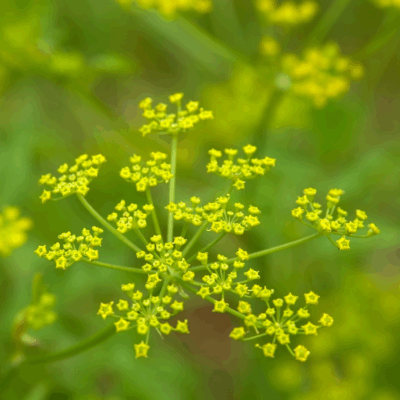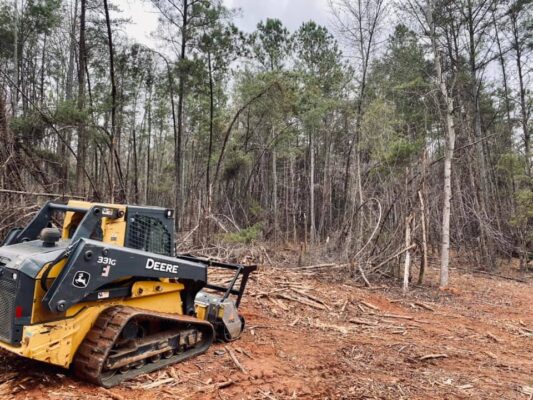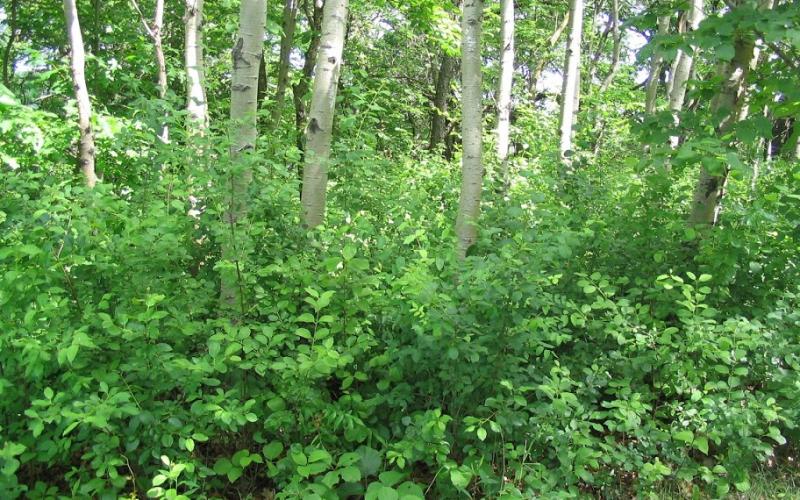Ideal Tips & Info
Invasive plants and non native species in wisconsin and how to get rid of them
Invasive plants are non-native species that overpower local ecosystems, reduce biodiversity, and damage wildlife habitat. In Wisconsin, these ecological invaders spread rapidly, crowd out native flora, and can negatively affect property value, recreation, and land use. Effective invasive plant control is essential for protecting your land and supporting healthy habitats.
Buckthorn and Garlic Mustard Invasion
The most problematic invasive plants in Wisconsin—such as garlic mustard and buckthorn—originated from Europe or Asia, often introduced as ornamental species or for erosion control. Because they arrived without natural enemies, they grow unchecked, shading out native plants and creating monocultures that don’t support local wildlife.
Common Invasive Plants in Wisconsin you’re likely to encounter:
Wisconsin is home to several aggressive invasive plant species that threaten native ecosystems and the usability of its land. If you spot any of the following on your property, it’s time to take action:

Buckthorn – A fast-spreading shrub that forms dense thickets, crowds out native plants, and disrupts forest regeneration.
Multiflora Rose – A non-native, thorn-covered shrub that overtakes pastures, wood edges, and trails.
Honeysuckle – Quickly dominates forest understories and prevents native trees and shrubs from establishing.
Wild Parsnip – Grows along roadsides and disturbed areas; causes severe skin burns when touched and exposed to sunlight.
Japanese Barberry – Common in shaded areas; changes soil chemistry and creates ideal conditions for ticks.
Japanese Knotweed – One of the most difficult invasives to control, especially near water; spreads rapidly via root systems.
Spotted Knapweed – A hardy invader of prairies and open fields; toxic to native plant communities.
Methods for Invasive Plant Control in Wisconsin, controlling these problems on your property often requires a two-pronged strategy:
Forestry Mowing for Invasive Brush Removal in Wisconsin
Forestry mowing—also known as forestry mulching—is one of the most efficient and environmentally friendly methods for clearing land overrun with woody invasive species in

Wisconsin. Using heavy-duty, skid-steer-mounted mulching machines, we grind thick brush, saplings, and invasive shrubs, such as common buckthorn, honeysuckle, and multiflora rose, directly into the ground.
This process clears your property without the need for hauling, burning, or excavation. The resulting mulch layer suppresses regrowth, helps retain soil moisture, and returns organic matter and nutrients back into the soil—enhancing long-term land health and reducing erosion.
Whether you’re managing hunting land, restoring a native prairie, or improving trail access, forestry mowing is a fast, cost-effective solution for reclaiming overgrown areas while protecting the natural ecosystem.
Targeted Herbicide Application for Invasive Plant Control
Targeted herbicide application is a critical follow-up to mechanical clearing, especially for stubborn invasive plants with persistent root systems. After forestry mowing, we apply selective, low-volume herbicide treatments to freshly cut stumps and regrowth zones to prevent resprouting and seed regeneration.
This method is especially effective on herbaceous invasive plants, such as wild parsnip, garlic mustard, spotted knapweed, and purple loosestrife—species that spread aggressively and can dominate native habitats if left unchecked.
Our team uses professional-grade herbicides with precise application techniques, minimizing impact on native species and surrounding vegetation. Herbicide treatments are timed for optimal effectiveness during the season, ensuring maximum absorption and long-term control.
When paired with forestry mowing, herbicide application offers a comprehensive and sustainable approach to invasive species management, allowing native Wisconsin plants to recover and thrive.
Controlled Burning: A Natural Solution for Invasive Species
Controlled burns are a proven land management technique used to reduce invasive species, stimulate the growth of native plants, and restore ecological balance. In Wisconsin, prescribed fire is especially useful in prairie and savanna ecosystems where many native species are fire-adapted, but most invasive plants are not.
When conducted safely and under the right conditions, prescribed fire can:
-
Eliminate seed banks and root systems of invasive weeds
-
Reduce thick layers of invasive brush
-
Promote the regrowth of fire-tolerant native grasses and forbs
-
Improve wildlife habitat by restoring natural plant diversity
This method is typically used in combination with forestry mowing or herbicide application for more stubborn species like buckthorn or multiflora rose.
Note: Controlled burns should only be performed by trained professionals with proper permits and weather conditions in place.
Ready to Reclaim Your Wisconsin Land?
If your property is overrun with invasive species, Ideal Land Management offers expert invasive species control in Wisconsin, including forestry mowing and precise herbicide application. Our approach is tailored to your land’s soil, terrain, and restoration goals. Contact us today to schedule a site assessment and begin restoring your land’s ecological integrity.

